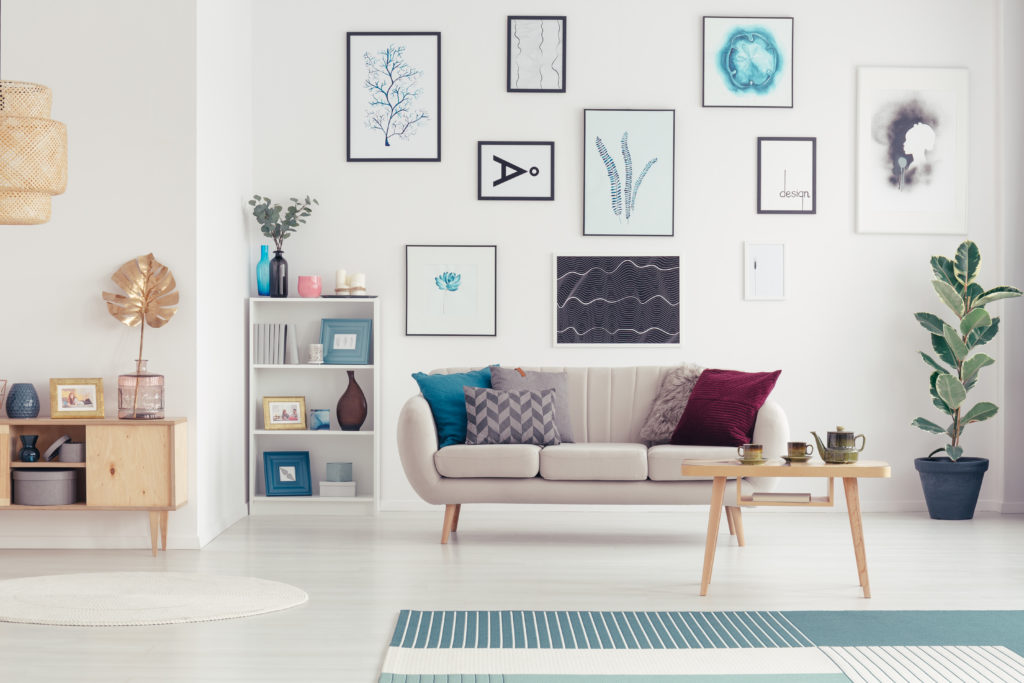While celebrity interiors may grace the covers of Architectural Digest or Elle Decor, the fact is that design is more accessible than ever before. Professional designers can completely transform a space, and you might be surprised to learn just how drastically design can impact your life, for better or worse. Hiring a professional designer ensures that your space serves you for the better.
Designers are problem-solvers.
For most people, there is at least one area in their home that doesn’t quite “work” for them, or at least doesn’t work as well as it could. A designer’s job is primarily to help you solve these problems. Whether its a space that’s too small, a room that needs to serve multiple purposes, awkward locations of architectural features, or a lack of storage space, we’re here to make your space work for you (and look beautiful too)!
Design is all around you.
It might surprise you to know that design is all around you. Every commercial or hospitality interior has been carefully designed by someone, somewhere. From your favorite grocery store to the clothing boutique in the mall, to restaurants, hotels, and even hospitals, these interiors have been thoughtfully planned, curated, and implemented by professional designers to both look beautiful and meet the needs of the space and its occupants.
Design influences your state of mind.
Professional designers use their skills in these spaces, as well as in private residences, to create a particular ambiance and elicit subconscious psychological responses to your surroundings. Depending on the type of business, or even the room in your home, a designer can engineer an environment to make you feel anything from alert and enthusiastic to calm and relaxed. In short, design has a tremendous effect on your mood.
Design helps you move through a space.
Two of the most important aspects of interior design are space planning and wayfinding. In fact, designers often use circulation diagrams in their plans to map out how its users will move through a space, and what furniture placement or indicators will be used to guide them. This creates an intentional “flow” of the room or space for simple navigation, smooth transitions, and effortless movement through the space.
Design can make your space safer, accessible, and inclusive.
An important distinction between professional designers and professional decorators is that designers are expected to obtain a formal education. Part of that education includes building safety codes and regulations that help us ensure our designs are both safe and ADA (American’s with Disability Act) compliant when required.
Design helps you organize a space.
Organization plays an important role in design in that it affects how efficient your space is. Is your space easy to move through? Are areas for related tasks placed near each other? Do you immediately know where to find items you’re looking for, and does every item have an appropriate storage space? No one wants to end up with a kitchen where the dishwasher is across the room from the sink, or the fridge feels miles away from your prep area. It’s small decisions like this that can make or break the functionality of your space. As designers, we work hard to understand how you use your space and what you need to be able to use it effectively.
Design changes the way you perceive a space.
Truly great designers have more than just an artistic eye, design intuition, and problem-solving skills. We know how to use light, color, and even sound to make a room appear larger, smaller, brighter, darker, longer, shorter, louder, or quieter. We use a wide variety of elements and creative design tricks to change the way you experience a space and to meet your needs and taste.
Design makes your space personal.
Lastly, great design makes your space more than just beautiful or efficient, but also uniquely personal. A great designer will listen to your preferences and incorporate personal items into the design. Your newly designed space should feel like more than just a showroom— it should feel like home.
